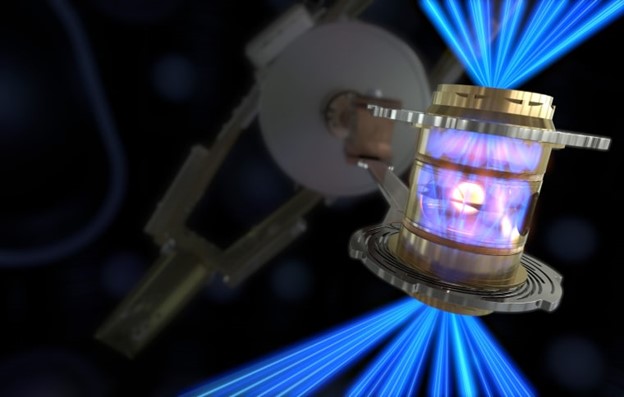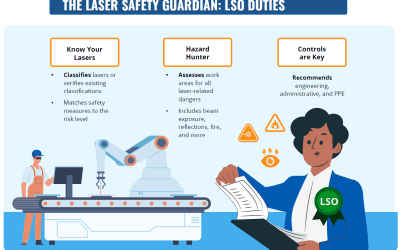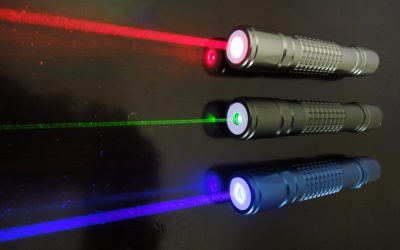New Fusion Breakthrough Using Lasers
The holy grail in the quest for unlimited clean and safe energy generation is fusion. A recent CNN story [1] introduced an amazing new breakthrough method using pulsed lasers to control the fusion reaction.
In late December 2022, Scientists at the US National Ignition Facility at the Lawrence Livermore National Laboratory in California for the first time reported a nuclear fusion reaction that showed a net energy gain compared to the amount of energy used to start and contain the reaction. This critical milestone of creating a fusion reaction that produced more energy that it took to create is called “ignition.”
Nuclear Fusion Background
As opposed to nuclear fission, which involves colliding a neutron with a heavy uranium atom to release energy when the atom is split, fusion creates energy by smashing two atoms, usually hydrogen, together to create a new element in the same way a star constantly creates energy. As explained in a Washington Post article related to this announcement, the “two atoms lose a small amount of mass which is converted to energy according to Einstein’s famous equation, E=mc2. Because the speed of light is very, very fast- 300,000,000 meters per second- even a tiny amount of mass lost can result in a ton of energy.” [2]
The historic approach to nuclear fusion has been to use magnetic fields to confine the fusion fuel in the form of a plasma. This is called magnetic confinement fusion magnetic_confinement_fusion. The new approach reported by the National Ignition Facility uses numerous lasers to both ignite the fusion raw material and to contain the output energy.
Controlled fusion would be far more climate friendly than fission because the resulting atomic particles are more stable and not so radioactive. And the base materials to fuel the reaction– deuterium and tritium, two heavier isotopes of hydrogen– are plentiful on Earth. As this article from NBC News notes: “Deuterium is abundant and can be extracted from water… Tritium can be extracted from Lithium, which is also in ocean water.” [3]
But even with large supplies of the raw materials available around the world, the commercial application of fusion is still likely decades away due to the complexity of containing the created energy and the input energy needed to maintain the conditions that enable the reaction.
Net Energy Gain
The goal for a scalable process is to have a net energy gain, which has proven difficult since the process has always taken more energy to manage the reaction than is gained back from the resultant energy generated. The researchers at the National Ignition Facility at the Lawrence Livermore National Laboratory in California announced they gained net energy (delivering 2.05 megajoules of energy to 3.15 megajoules of fusion energy) by shooting lasers at hydrogen atoms. The created energy required 192 laser beams to compress the hydrogen atoms down to about 100 times the density of lead at approximately 100 million degrees Celsius.
The result was helium plus a stream of free neutrons containing a high amount of energy. The heat generated when these neutrons collide with the reactor wall at high speed is what causes the heat and resultant energy of the reaction. The braking energy of this collision generates heat, which can be converted directly into energy.
But even the short reaction time of this new experiment, starting and finishing in about as long as it takes to blink an eye, required about 300 megajoules of energy to power the laser array. So there is still a long way to go scaling the reaction for the total energy input to be constant and less than the generated output energy.
Using Pulsed Lasers
The new approach using what is called two-phase pulsed lasers. This differs from typical laser fusion that has the two isotopes of deuterium and tritium housed together in a small pellet or target that is struck by laser light pulses in a special fusion chamber. As explained in this article from Nuclear Engineering International [4], pulsed laser fusion works by
A two-phase laser bombardment, or “fast ignition” for short, is the favoured approach for economic viability. First, a green laser flash compresses the capsule before a subsequent laser-generated proton beam heats the dense matter to ignition temperature. It works much more efficiently thanks to separate compression and ignition phases. This approach is favoured for commercial energy production because it relaxes the stringent requirements of the lasers needed to compress the fuel, and it offers a more viable approach to the high energy gains of greater than 100 needed for electricity production.
https://www.neimagazine.com/features/featurelooking-at-pulsed-laser-nuclear-fusion-10416907/
This more efficient process was used by the National Ignition Facility to report this new breakthrough.
Power of the future?
Will your house soon be powered by fusion generated energy? Scientists say no. Although a net energy gain was attained using this new approach, the super-hot lasers take about 100 times the energy to run, which can only be done several time a day in order to let them cool down. For fusion to become commercially viable, the process would need to be repeatable and constant, with dozens of continuous laser shots per second.
Commercial fusion energy will take the will, and the dollars, needed to bring it to fruition. A related story in EcoWatch highlights that in the future, contained and constant fusion energy could turn into the clean energy generation game changer. The EcoWatch story notes that “the eventual benefits of nuclear fusion — no greenhouse gas emissions, less resources needed than wind and solar and zero radioactive waste — would change the landscape of energy production and potentially provide low-cost energy to poverty-stricken countries.” [5]
How much energy?
The reported net energy gain is a significant improvement over other fusion experiments where more energy is used to create and contain the fusion reaction compared to any energy generated. But total energy generated in this short reaction was still a small amount of total energy.
As the CNN story reports: “It’s about what it takes to boil 10 kettles of water,” said Jeremy Chittenden, co-director of the Centre for Inertial Fusion Studies at Imperial College in London. “In order to turn that into a power station, we need to make a larger gain in energy – we need it to be substantially more.” [1]
The NBC News story [3] previously mentioned also includes an embedded video giving more details of the announcement: https://www.cnn.com/2022/12/12/politics/nuclear-fusion-energy-us-scientists-climate/index.html
References
[2] Washington Post, What you need to know about the U.S. fusion energy breakthrough: https://www.washingtonpost.com/climate-solutions/2022/12/12/nuclear-fusion-breakthrough-benefits/
[3] NBC News, We have ‘ignition’: Fusion breakthrough draw energy gain: https://www.nbcnews.com/science/science-news/fusion-breakthrough-net-energy-gain-rcna61326
[4] Nuclear Engineering International, Looking at pulsed laser nuclear fusion: https://www.neimagazine.com/features/featurelooking-at-pulsed-laser-nuclear-fusion-10416907/
[5] EcoWatch, Fusion Breakthrough Could Be Game-Changer for Clean Energy: https://www.ecowatch.com/fusion-breakthrough-clean-energy.html
[6] ArsTechnica (another great summary of the breakthrough), Laser-driven fusions’ internal energies not matching up with predictions: https://arstechnica.com/science/2022/11/laser-driven-fusions-internal-energies-not-matching-up-with-predictions/

Image credit: Lawrence Livermore National Laboratory



